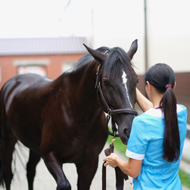Study sheds light on Chiari-malformation

New research has identified characteristics that cause Chiari-malformation and Syringomyelia in toy dogs.
New research by the University of Surrey School of Veterinary Medicine has identified characteristics that cause Chiari-malformation and Syringomyelia in toy dogs.
Working in collaboration with neurologists at Fitzpatrick Referrals and Helsinki University, the researchers developed two separate studies, which are published in the journal PLOS ONE.
In the first study, the researchers used an innovative MRI mapping technique to highlight how Chiari-malformation and Syringomyelia can occur in the Cavalier King Charles spaniel.
Using video footage, the team were able to observe the compression of a dog’s brain, which is caused by the premature fusion of bones in the skull. Such fusions also occur at the front of the head, creating the flat-face and doll-like features that are common in this breed.
In the second study, the team examined characteristics that increase the risk of Syringomyelia in the chihuahua, Cavalier King Charles spaniel and affenpinscher. Using a similar technique to the first study, the researchers found that neck and skull conformation were subtly different between breeds.
The technique revealed that syringomyelia-affected chihuahua’s tended to have a smaller angle between the base of the skull and the first and second neck vertebrae. The affenpinschers, however, had a smaller distance between the first and second vertebrae.
The team also found that Cavalier King Charles spaniels have reduced space between the joint on the skull base and the first cervical vertebrae. All breeds had a reduced hind skull which altered the angulation of the skull base with neighbouring bones in affected dogs.
“Toy dogs are increasingly popular and as such demand for these breeds is unprecedented. Due to selection for rounded head shapes with short muzzles, we are seeing more and more dogs with the painful Chiari malformation and Syringomyelia disorder,” said co-author Dr Clare Rusbridge from the University of Surrey.
“The innovative mapping technique used in this study has the potential to provide a diagnostic tool for vets, helping them to quickly identify dogs suffering from these painful disorders.”



 The BEVA has opened two new roles on its Nurse Committee.
The BEVA has opened two new roles on its Nurse Committee.